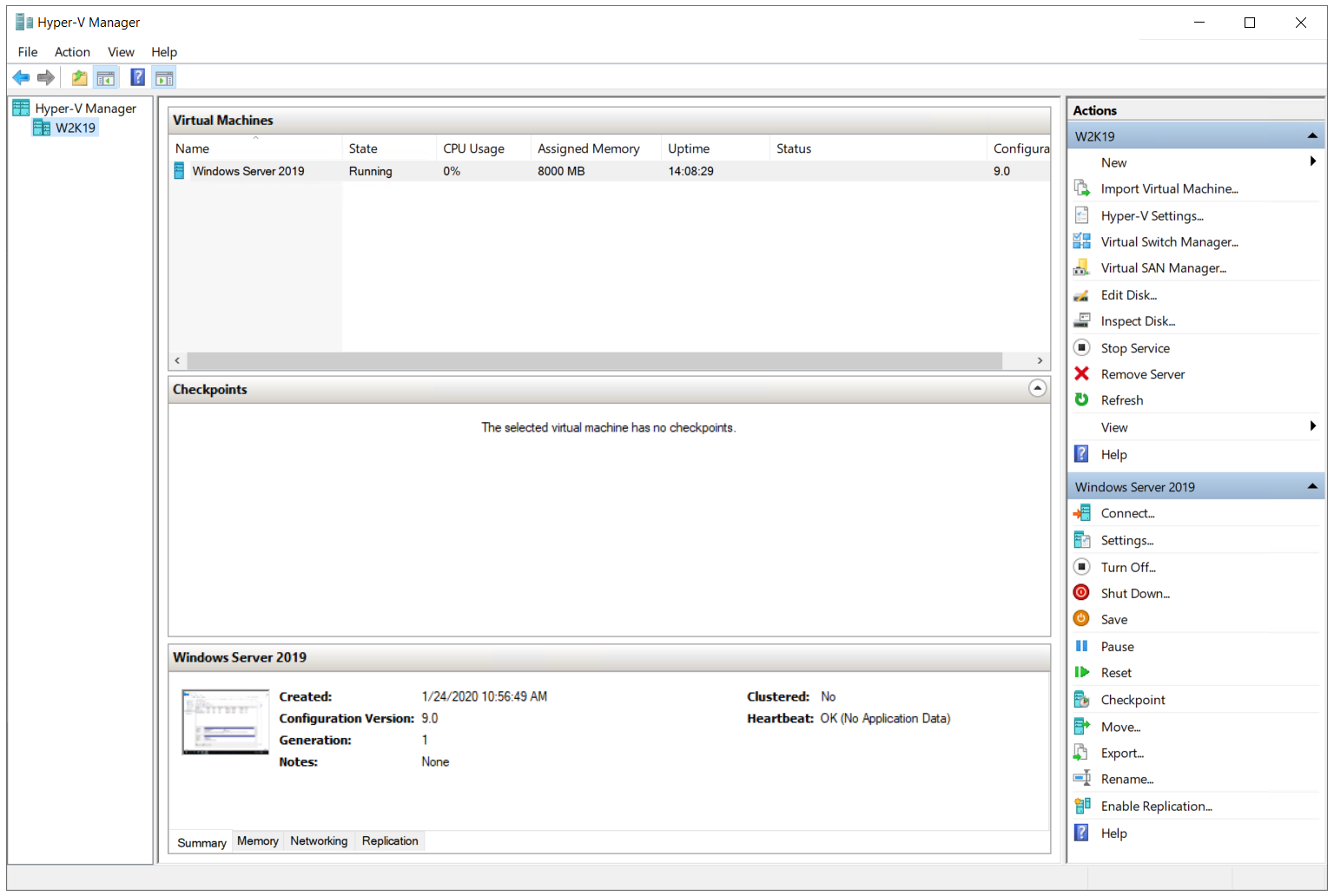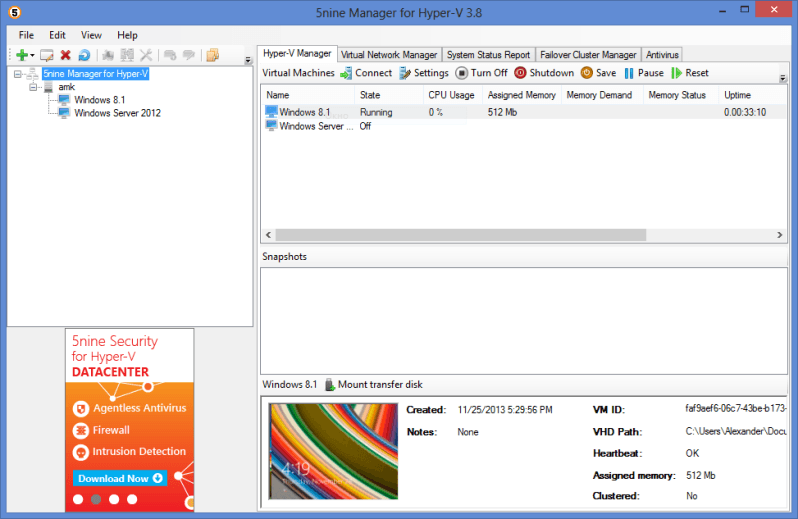

To understand what makes Hyper-V Manager unique and how it can best be used, let’s look at all of its features.

See the full list of supported combinations of Hyper-V Manager and Hyper-V host versions here.ĭesigned for businesses of all sizes, NAKIVO Backup & Replication offers complete data protection for all of your production workloads, including VMware vSphere Backup, Hyper-V Backup, Microsoft 365 Backup and more. Even though the management tool doesn’t have any particular hardware requirements, Hyper-V Manager should be deployed on the same Hyper-V host version to use the full feature set available for this particular operating system (OS) version. System requirementsīefore installing Hyper-V Manager, make sure that your computer meets the hardware requirements to host Hyper-V. Hyper-V Manager was first released by Microsoft along with Widows Server 2008 and since then it has been available as part of Windows OS, meaning that it doesn’t require any additional licensing. Microsoft Hyper-V Manager is an administrative tool which can be used for creating, modifying, and removing virtual machines (VMs) and hosts running in a Hyper-V virtual environment. In this blog post, we will discuss how to install and configure Hyper-V Manager and how it can improve the Hyper-V management process. However, Hyper-V Manager stands out among them due to its simplicity and user-friendly interface. Microsoft provides a wide variety of tools for managing Hyper-V environment: System Center Virtual Machine Manager (SCVMM), PowerShell, Server Configuration tool, etc. By Jessie Reed How to Install and Configure Hyper-V Manager


 0 kommentar(er)
0 kommentar(er)
